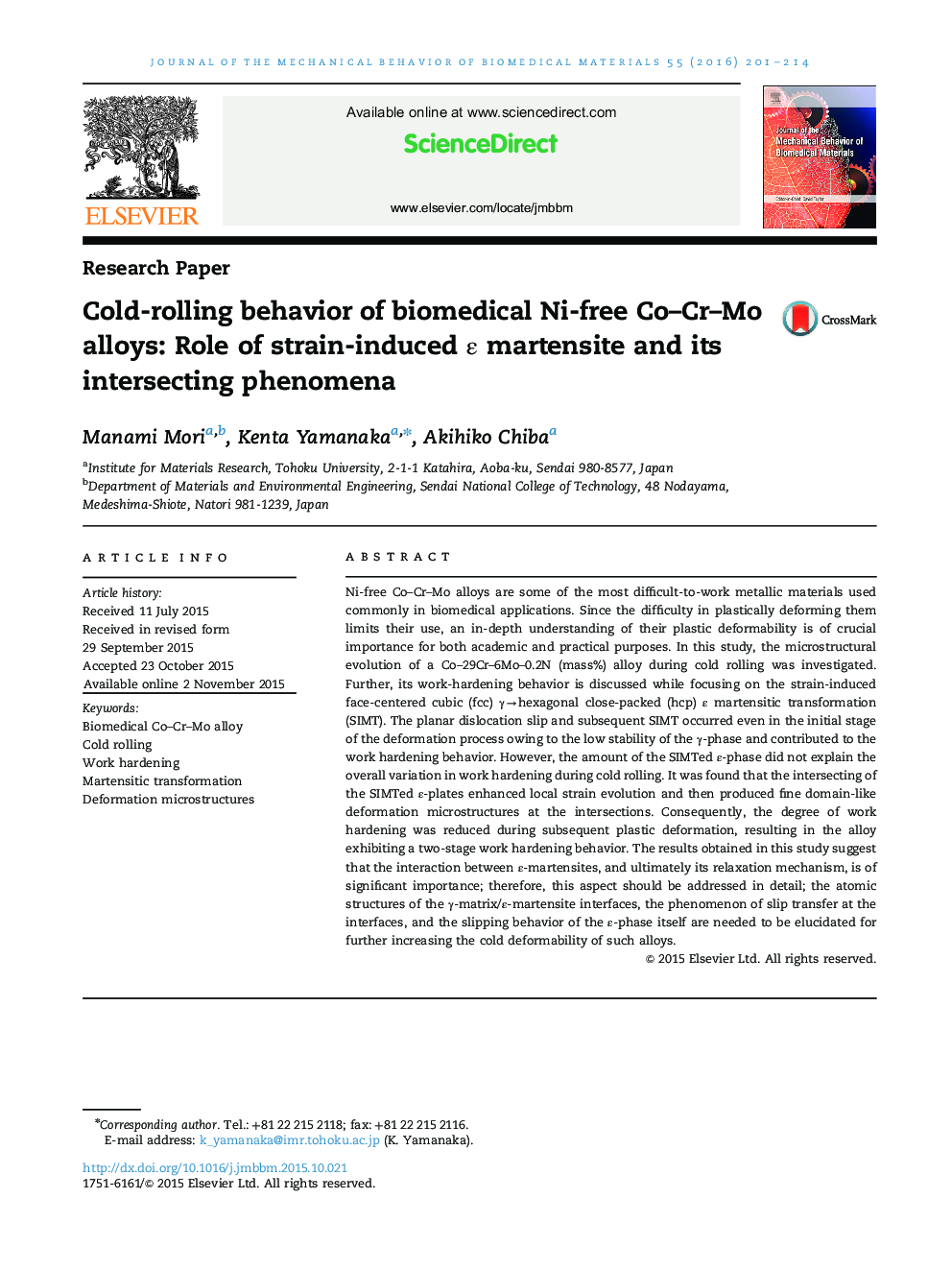| Article ID | Journal | Published Year | Pages | File Type |
|---|---|---|---|---|
| 810507 | Journal of the Mechanical Behavior of Biomedical Materials | 2016 | 14 Pages |
•We study the microstructure evolution of a Co–Cr–Mo alloy during cold rolling.•Role of the strain-induced martensitic transformation (SIMT) was evaluated.•The SIMT occurred in the initial stage of the deformation process.•The intersecting the ε-martensites is essential in the plastic deformation.
Ni-free Co–Cr–Mo alloys are some of the most difficult-to-work metallic materials used commonly in biomedical applications. Since the difficulty in plastically deforming them limits their use, an in-depth understanding of their plastic deformability is of crucial importance for both academic and practical purposes. In this study, the microstructural evolution of a Co–29Cr–6Mo–0.2N (mass%) alloy during cold rolling was investigated. Further, its work-hardening behavior is discussed while focusing on the strain-induced face-centered cubic (fcc) γ→hexagonal close-packed (hcp) ε martensitic transformation (SIMT). The planar dislocation slip and subsequent SIMT occurred even in the initial stage of the deformation process owing to the low stability of the γ-phase and contributed to the work hardening behavior. However, the amount of the SIMTed ε-phase did not explain the overall variation in work hardening during cold rolling. It was found that the intersecting of the SIMTed ε-plates enhanced local strain evolution and then produced fine domain-like deformation microstructures at the intersections. Consequently, the degree of work hardening was reduced during subsequent plastic deformation, resulting in the alloy exhibiting a two-stage work hardening behavior. The results obtained in this study suggest that the interaction between ε-martensites, and ultimately its relaxation mechanism, is of significant importance; therefore, this aspect should be addressed in detail; the atomic structures of the γ-matrix/ε-martensite interfaces, the phenomenon of slip transfer at the interfaces, and the slipping behavior of the ε-phase itself are needed to be elucidated for further increasing the cold deformability of such alloys.
Graphical abstractFigure optionsDownload full-size imageDownload high-quality image (326 K)Download as PowerPoint slide
